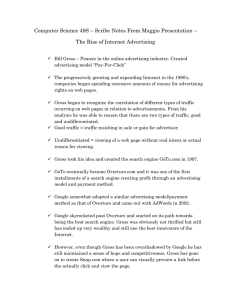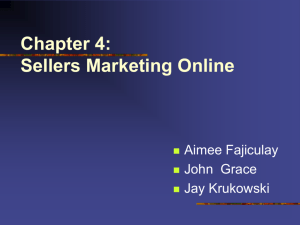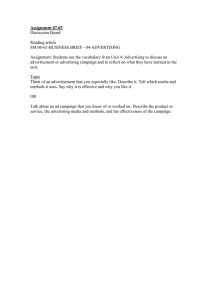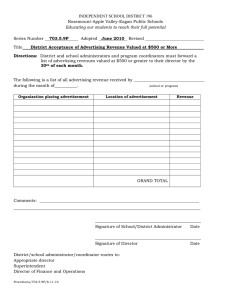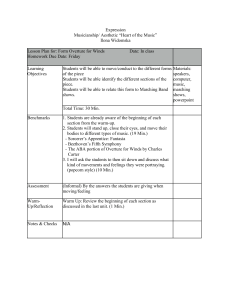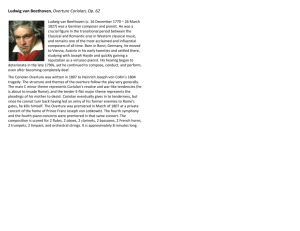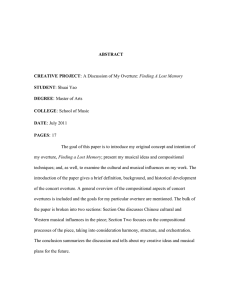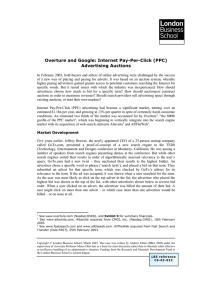February 20, 2007 in that particular advertisement)
advertisement
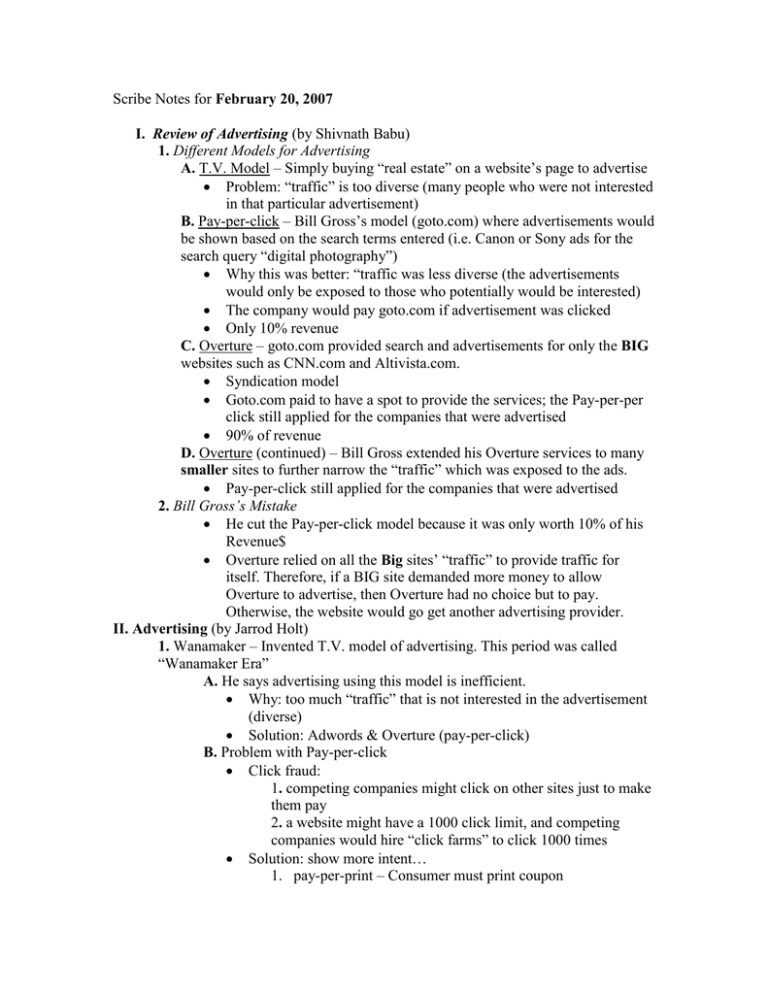
Scribe Notes for February 20, 2007 I. Review of Advertising (by Shivnath Babu) 1. Different Models for Advertising A. T.V. Model – Simply buying “real estate” on a website’s page to advertise Problem: “traffic” is too diverse (many people who were not interested in that particular advertisement) B. Pay-per-click – Bill Gross’s model (goto.com) where advertisements would be shown based on the search terms entered (i.e. Canon or Sony ads for the search query “digital photography”) Why this was better: “traffic was less diverse (the advertisements would only be exposed to those who potentially would be interested) The company would pay goto.com if advertisement was clicked Only 10% revenue C. Overture – goto.com provided search and advertisements for only the BIG websites such as CNN.com and Altivista.com. Syndication model Goto.com paid to have a spot to provide the services; the Pay-per-per click still applied for the companies that were advertised 90% of revenue D. Overture (continued) – Bill Gross extended his Overture services to many smaller sites to further narrow the “traffic” which was exposed to the ads. Pay-per-click still applied for the companies that were advertised 2. Bill Gross’s Mistake He cut the Pay-per-click model because it was only worth 10% of his Revenue$ Overture relied on all the Big sites’ “traffic” to provide traffic for itself. Therefore, if a BIG site demanded more money to allow Overture to advertise, then Overture had no choice but to pay. Otherwise, the website would go get another advertising provider. II. Advertising (by Jarrod Holt) 1. Wanamaker – Invented T.V. model of advertising. This period was called “Wanamaker Era” A. He says advertising using this model is inefficient. Why: too much “traffic” that is not interested in the advertisement (diverse) Solution: Adwords & Overture (pay-per-click) B. Problem with Pay-per-click Click fraud: 1. competing companies might click on other sites just to make them pay 2. a website might have a 1000 click limit, and competing companies would hire “click farms” to click 1000 times Solution: show more intent… 1. pay-per-print – Consumer must print coupon 2. pay-per-call – Consumer must call the advertiser (ex. Plumbing business) 3. cost-per-action – Consumer must purpose something from advertisement C. Branding – wanting people to buy YOUR brand (keeping them aware of your product) Pro – reaches many people (ex. Sponsor games etc.) Con – Cost a lot of money D. Real time – As things are happening Real time feedback – analyzing return on investment as things are happening Asset management – making company decisions based on this feedback E. Advertising Agency – Agency that helps you to advertise Google wants these agencies to know how to effectively use advertisement (hoping that they use Google) G. Google offline: buying space to auction off to others Magazines Radio T.V.
